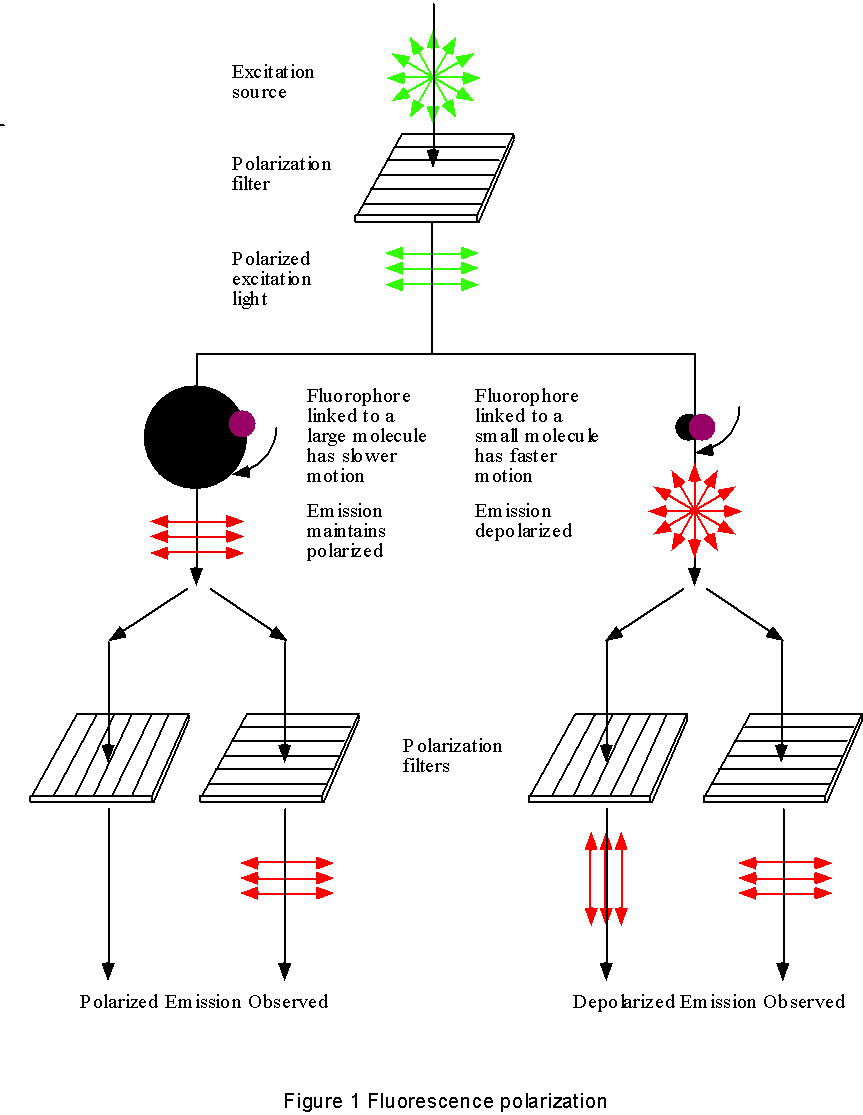

A scheme illustrates the principle of fluorescence polarization (FP). When a fluorophore is attached to a small molecule, it has fast motion. When a polarized light source excites it, the emission is depolarized due to the molecular motion. As the size of the molecule increases, the molecular motion will be slower, there will be more emission that retains the polarization. In a reaction such as allele-specific primer extension in TDI assay, the mass change from substrate to product could be monitored by FP change. For TDI assay, a dye-labeled terminator is about 1000 Dolton, when it is incorporated onto a 30-mer oligonucleotide, the mass is around 10,000 Dolton. The FP change in the reaction is, therefore, can be used as an index for the formation of products. Home | Experience | Research | Qualification | Contact Last revised: January 13, 2004. |